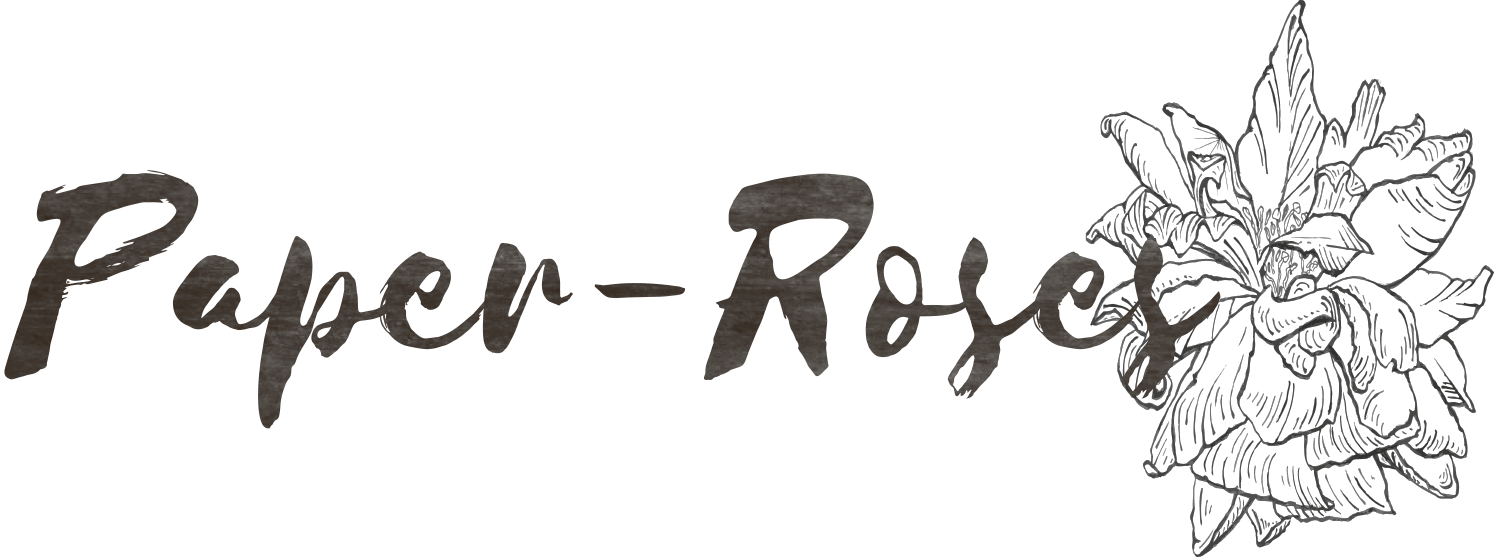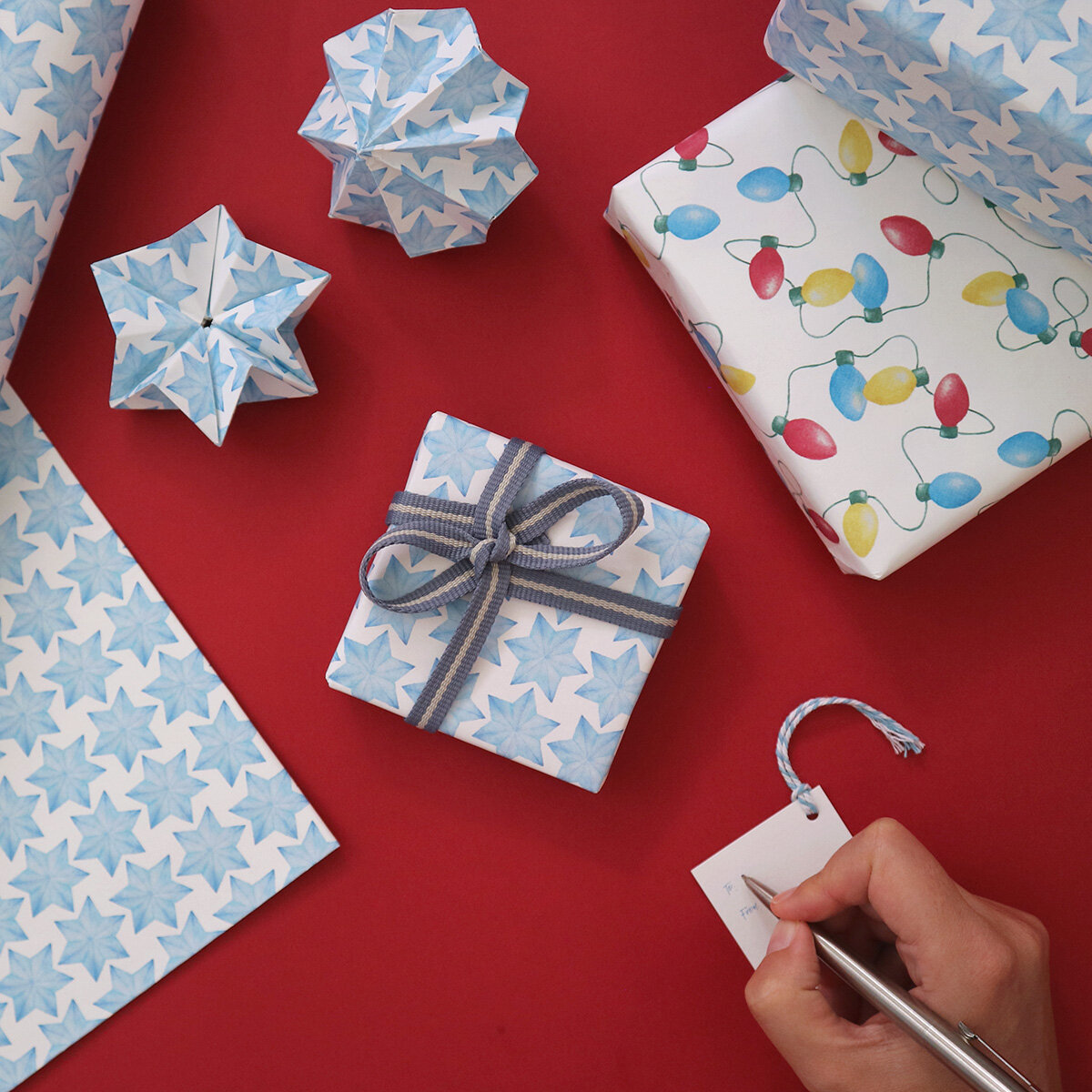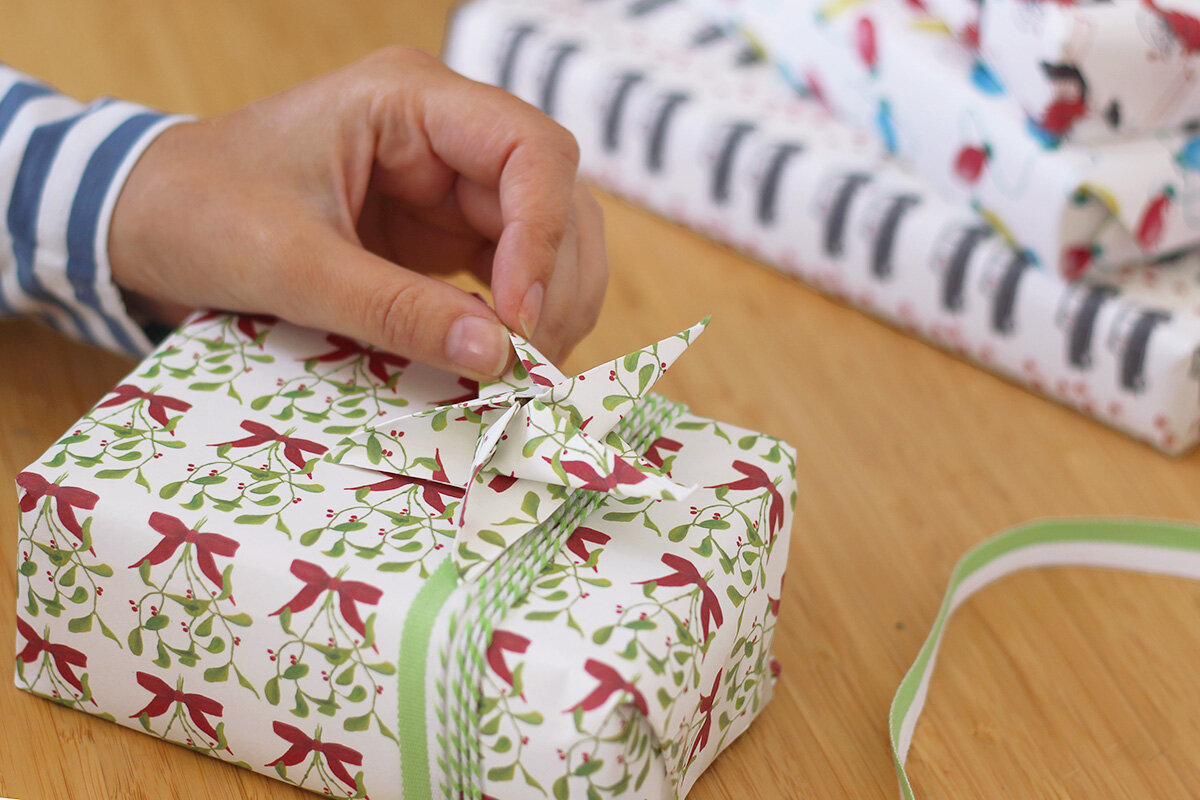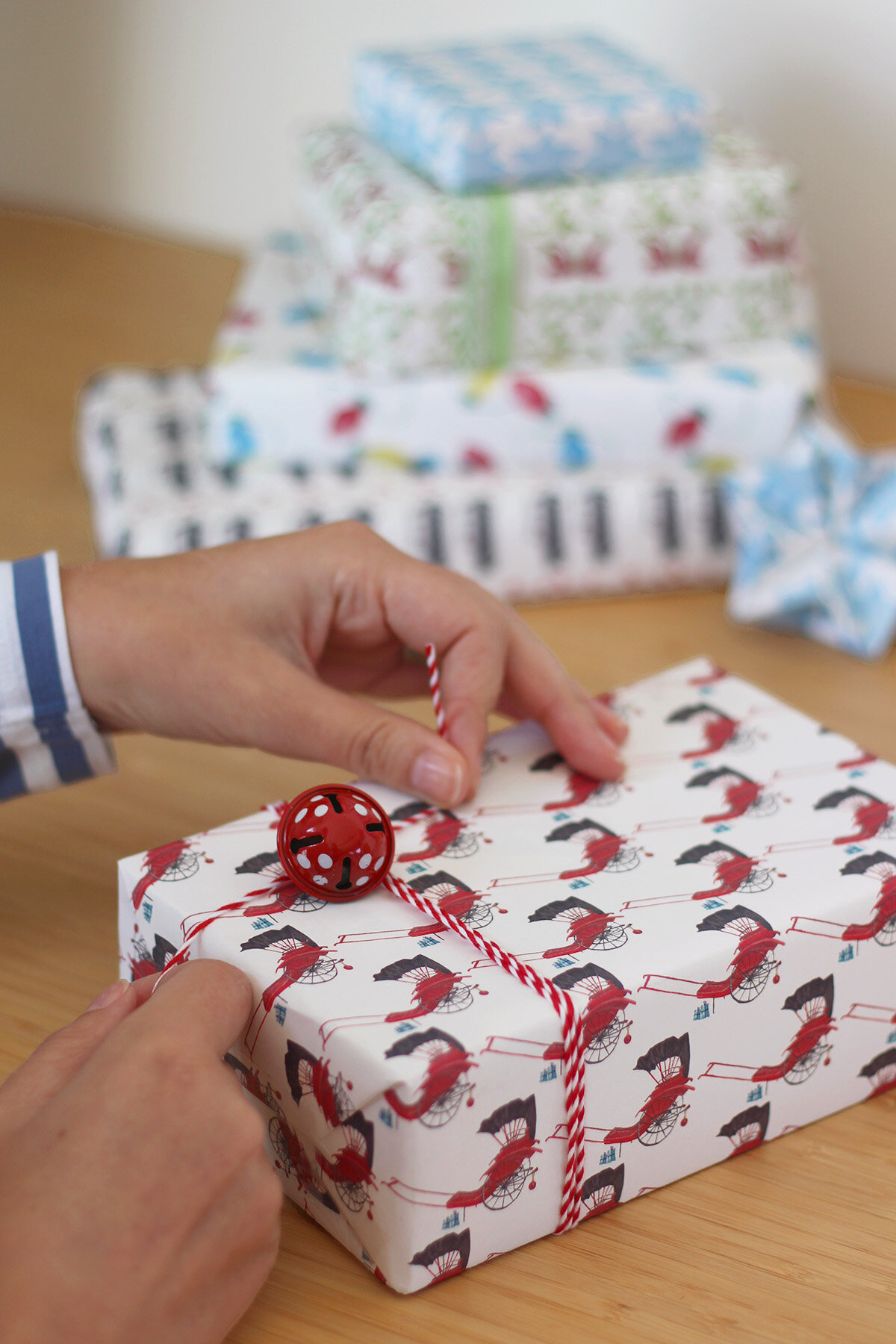Going green with your gift wrap
I absolutely adore a well wrapped gift, don’t you? They look so, so pretty under the Christmas tree…helping to build the anticipation and excitement…waiting for the day when you can rip the wrapping off (or not, but more on that later) to find out what’s inside.
But, what I don’t like are the huge mounds of wrapping paper, ribbons and other decorations that are wasted and thrown in the bin before ending up in landfill. If, like me, you want your gifts to look neat, pretty and stylish, just without all of the waste and the environmental impact, read on.
Not all wrapping paper is created equal
“Wrapping paper can’t be recycled”
This blanket statement is something I hear all of the time and, to be honest, it really bugs me. It’s true, that really glitzy, glittery, shiny gift wrap almost certainly can’t be recycled, but it’s not true for all paper. And that’s perhaps the crux of it - the glitzy, glittery, shiny stuff probably isn’t actually paper!
So, how do you know what can and can’t be recycled?
Firstly, avoid glossy, reflective paper - this almost certainly contains plastics, metals and other materials, and in fact might not have any paper in it at all, making it almost impossible to recycle. If it’s kind of shiny, but you’re not sure, use the “scrunch test”. If it scrunches and stays scrunched, it can probably be recycled.
Does this include paper with foiled patterns? Well, this depends how the foiling has been done - there are lots of different ways to achieve this effect, and some of them can be recycled while others can’t, so it’s best to avoid this type of paper if it’s not clearly labelled as recyclable.
What about glitter? This is a really big no-no if you want to recycle. Think how glitter gets everywhere as soon as you open it and you can imagine how easily it could get into machinery and cause problems.
So, in summary, if you want to recycle, look for wrapping paper that’s actually paper and forget about all the bells, whistles and embellishments. This doesn’t mean it needs to be boring - there are lots of perfectly pretty, colourful options out there that can be recycled. Just remember to remove any sticky tape before you put it in the recycling bin.
While this gives you a good rule-of-thumb, recycling rules might differ locally, so please check before putting your wrapping paper in your recycling bin. Thankfully, in Hong Kong, although government paper recycling is limited, a local company, Mil Mill, can process lots of different types of paper.
Anything else about paper I should know?
Just while we’re on the subject of recycling, don’t forget that you get extra brownie points if the paper you use has already been recycled. This is true for both pretty, printed papers and brown Kraft paper - so always look for the FSC Recycled label when you buy. You can read more about recycled paper and why it’s worth going the extra mile for here.
And for printed paper, it’s worth checking what type of ink is used. Traditionally, printing inks were made using petroleum oils; now, soy and vegetable based inks are more common. From an environmental sustainability perspective this is good news - the more renewable content the inks contain, the better.
But, that’s not all you should look for when buying wrapping paper. If you look for thicker, better quality paper it will “hold the fold”, so you won’t need to use sticky tape when wrapping - some string or a pretty ribbon will do the job admirably. Thicker paper won’t rip as easily either (and if you don’t use tape, it’s even less likely to), so it can be used to wrap presents more than once (if it’s an uncoated paper you can iron it on the back to remove creases before reusing) before it’s recycled.
What about Paper-Roses’ wrapping paper?
It’s made from uncoated, FSC certified, 100% recycled paper, it’s printed with soy-based inks, and it’s recyclable too. It’s also wonderfully thick, so it’s very capable of holding the fold and I have one sheet of Paper-Roses’ paper that’s been used at least seven times (with a quick iron in between) to wrap presents!
Are there alternatives to traditional wrapping paper?
Absolutely, yes. Furoshiki, the traditional Japanese wrapping cloth, has a more than 1,200 year history. You can use tea towels, scarves or any other beautiful fabric you might have to wrap in this way.
But, if like me, you enjoy the easy option, reusable fabric gift wrap bags make for a great zero-waste alternative to both Furoshiki and traditional wrapping paper. They’re perfect for all of those awkwardly shaped items and super quick wrapping - no folding, scissors or tape involved, simply pop the present in and tie a bow in the ribbon. And you can use them to store toys, jumpers, your gym shoes or even your undies when they’re not in use as gift wrap!
Here though, I think it’s important to note that just like its paper equivalent, not all fabric wrap is created equal. The type of fabric that’s used must be taken into account - is it an eco-friendly option? I love using GOTS certified organic cotton - it’s soft, naturally strong, lasts forever (OK, this might be an exaggeration, but it’s definitely very long lasting), it’s biodegradable and it meets GOTS social, ethical and ecological criteria. Even better if the fabric’s also printed in an organic factory, where certified inks are used.
With a little thought and imagination, you’ll find plenty of other items that you can use to wrap gifts. What about an old crisp packet? Turn it inside out, rinse and hey-presto, shiny silver wrap. Or maybe a mason jar - they’re perfect for edible gifts, but work just as well for smellies and other small gifts.
BRINGING ON THE PRETTY
Once you have the basics in place, it’s time to decorate and add those little personal touches. This could be as simple as adding a gift tag (after all you need to know who the gift is for), some string, a ribbon or a bow (making sure you look for cotton, linen or hemp if you need to buy new - they’re all biodegradable, unlike the foil, plastic and polyester ones). Or you could get a little more adventurous…
Use leftover scraps of wrapping paper to create beautiful alternatives to bows - there are lots of origami tutorials you can follow to create stars, Christmas trees, hearts, butterflies…all sorts of beautiful things.
Reuse all the bits and bobs that you’ve received on gifts and packaging throughout the year. Save them up and you’ll be surprised how much pretty making material you have…bells, ribbons, bows…
And if you have more decorations than you could ever fit on your Christmas tree, give them a new life as a gift decoration and maybe you’ll see them on your friend’s tree next year.
And once the presents are wrapped?
Well, it’s time to put them under the Christmas tree of course. But will it be a real tree or something else?
As a child, I was lucky enough to live in a house with a beautiful garden and each year Mr. Paper-Roses senior (AKA my dad) would head out into the garden and dig up the Christmas tree…the one that was transplanted into the garden the Christmas just after I was born. This same tree moved into and out of the house (in a big orange bucket) each year until I was 9 years old, when it just got too big to bring inside. That year, we got a new tree…which then went in and out for many more years while the original one got taller and taller in the garden.
The year I spent my first Christmas in Hong Kong, I really wanted a real tree…and I had one, but it was super expensive and missing it’s root ball, so even if I’d had a garden to plant it in, I wouldn’t have been able to. We now have a reusable plastic tree which I bought from Oncor. Made from recycled plastic, it’s rather realistic to look at…and there aren’t any dropped needles to sweep up each morning. I love it!
If you’re looking for something a little bit different, there are plenty of other options too. A decorated wooden ladder perhaps? Or the macramé tree from Make & Do HK - it’s perfect for a smaller apartment and will look absolutely fabulous hanging on a wall, decorated with some unique Christmas decorations.
Talking of decorations…although they’re less of an immediate priority for sustainability, it’s worth taking a conscious view if you’re buying. Forget cheap and cheerful plastic options and look for pieces that you’ll treasure for a lifetime. Mr. Paper-Roses and I like to collect decorations when we travel - it’s a great way to remember the different places we’ve been and it means no-one else will have a tree exactly like ours.
One thing I worried about when I made the change to using a fake tree was that nothing smells better than a proper tree (apart from maybe freshly cut grass). But, I’ve found there are ways to get around that too. I love the Christmas Tree scented candles from Carroll and Chan - and what makes them even better is that if you buy the jar version, you can return the jar so it can be reused!
I’d love to know how you wrap your presents - comment below and share your pictures with me on Instagram or Facebook - tag me at @paperrosesdesigns. And any other tips you have on making Christmas more sustainable are always extremely welcome.







